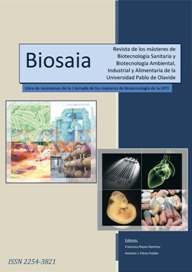New treatment against Burkitt Lymphoma: targeted-nanoparticles carrying antagomiR17
Palabras clave:
antagomiR17, Burkitt Lymphoma, nanoparticlesResumen
Motivation: Burkitt Lymphoma is one of the most curable cancers thanks to chemotherapy, but this treatment has side effects because it does not only attack tumor cells, but healthy tissue. It has been discovered the overexpression of miRNA17 in Burkitt Lymphoma cells blocking the apoptosis mechanism, but miRNA17 can be inhibited by an oligonucleotide, antagomiR17. In this project, a new treatment with chitosan nanoparticles functionalized with rituximab (a monoclonal anti-CD20 antibody) and carrying antagomiR17 has been studied in order to solve the off-target problems of chemotherapy.
Methods: In vivo, the immunophenotype of two different Burkitt Lymphoma cell lines, Bjab and Raji, were analyzed by flow cytometry and immunofluorescence. In addition, the internalization of chitosan nanoparticles functionalized with rituximab was tested by flow cytometry and confocal microscopy in both Burkitt Lymphoma cell lines. Also, the therapeutic effect of encapsulated antagomiR17 was checked in Bjab cell line. Ex vivo, the binding of modified nanoparticles was determined by immunofluorescence.
Results: The immunophenotype confirmed the high expression of CD20 as surface marker in Burkitt Lymphoma cell lines, which is recognized by rituximab. In addition, the internalization of nanoparticles into cells was confirmed. However, the study of the therapeutic effect of antagomiR17 resulted in toxic chitosan nanoparticles for cells. The charge of nanoparticles was modified by adding different polymers (polyethylene glycol, tripolyphosphate, and pluronic acid F68) in the surface in order to reduce the toxicity of nanoparticles by decreasing their positive charge, and studies of binding were made in healthy kidney tissues with these new nanoparticles.
Conclusions: Although nanoparticles were internalized into cells, empty chitosan nanoparticles resulted toxic for cells, so modified ones less positive charged were studied in terms of binding. However, more studies are still needed. antagomiR17 must be tested to confirm its therapeutic efficacy in these new active targeted delivery systems.




